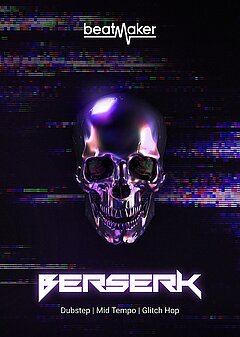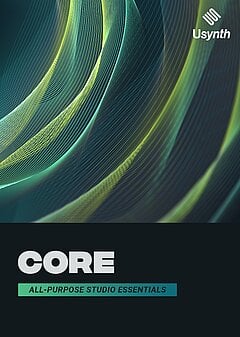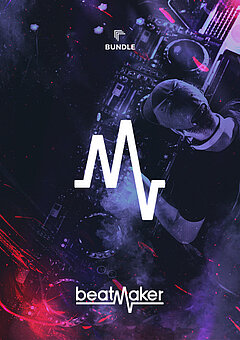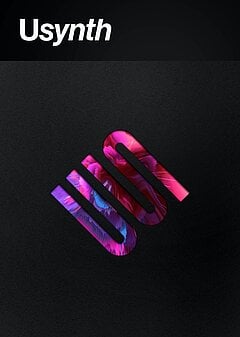How to Produce the Top 3 Subgenres of Dubstep
Simple principles you can apply for effective sound design and drum beats in any style without the guesswork.
SEPTEMBER 2ND, 2022
Glitch hop tends to be moderately fast, with a hefty pumping feel. Imagine dubstep, but with a more lighthearted and innocent vibe. Learn about this and more nuances of the top 3 subgenres of dubstep in this article:
Midtempo
This is a great place to start, as this genre encompasses many forms of musical inspiration. While dubstep is mostly focused on gritty bass design, midtempo incorporates inspiration from “milder” genres like electro and house as well. Overall, the genre often leans toward more industrial trends than pure dubstep, but there’s still a clear presence of heavy bass design. The distinction is largely a matter of feel — the emphasis is more on fun and expression than it is on sound design alone. Another key factor of course is the tempo, from which midtempo gets its name; this typically sits in the range of 90-110 bpm, neither too fast nor too slow.
There’s also a key difference to be aware of in the beat: Midtempo often falls under 4-to-the-floor, meaning the kick hits on every beat. Rather than the pure kick - snare alternation that dubstep is famous for, midtempo has consistent kicks with a snare or clap layered on beats 2 and 4. This creates a more driving feel and removes the need for snares to take up so much room in the mix. The additional weight from this change in the drums also allows you to pull back ever so slightly on the bass to keep the groove moving forward — i.e. motion over complexity.
To create the exact sound you’re looking for in any variety of dubstep, check out Beatmaker BERSERK — your one-stop shop for hefty kicks and snares that lock perfectly every single time! For midtempo grooves, check out the preset Shift which has just the kick - snare combo to get the job done!
Glitch hop
Glitch hop beats are similar to traditional dubstep — in some cases, you may even be able to get away with using their beats interchangeably. Stick with a kick on beat 1, snare on beat 3 pattern will generally serve you well in this genre. The main difference lies within what happens around the kick and snare. In dubstep, this can be as simple as a single open hi hat on beats 2 and 4 (or alternating hi hats every eighth note, excluding the kick and snare hits). Not so with glitch hop, which emphasizes a triplet rhythm in between hits. This can also translate fairly easily to swing rhythms, which is essentially the same as a triplet rhythm that skips every 2nd triplet.
As you listen to more glitch hop, also make note of the overall tone — though traditional dubstep tends to be dark and gritty, glitch hop often has a light and happy feel. This can manifest as less aggressive sound design, more major chords and most importantly a more melodic (or at least, tonal) drop. In some cases, you may not even hear a dedicated drop bass, instead favoring large supersaw stacks with rich chords as the emphasis lies on melodic and harmonic content. While you might be able to get away with purely dubstep sounds, be sure to tweak the drums according to the nature of the song. Say you’re using BERSERK — the preset Insomnia is nice and gritty, but if that proves to be too aggressive for glitch hop, you could switch to Menace, with its cleaner and more metallic snare. At the end of the day, your ears should be the judge!
To dive deeper into the nuances of this genre, check out our companion article, How to Make Glitch Hop!
Drumstep
This can be a uniquely fun and rewarding genre to write in, but a word of warning: You must have a great sense of rhythm to pull it off! In contrast to the other main subgenres of dubstep, drumstep gives the odd impression of moving fast and slow simultaneously. The reason lies in its syncopated half time feel, which typically takes 2 bars to repeat its core rhythm (versus only one bar with dubstep). A drumstep beat often has a pattern roughly similar to: kick on beat 1, snare on beat 3, kick on the “and” of beat 4, kick on beat 2 of the following measure, and snare on beat 3 of the following measure. Drumstep is often considered a blend between dubstep and drum & bass — if you look closely, this pattern is essentially a half-time version of a generic drum & bass beat, with the main difference being the use of beefier kick and snare samples.
You may notice one major difference in the drums, though: While dubstep often has massive kicks and snares with hefty midrange, drumstep contains far more rhythmic subdivisions in the percussion, meaning that the kick and snare must be extremely tight to avoid creating conflict in the mix. This isn’t a hard and fast rule, but you can see a great example of this when comparing two presets from BERSERK — Cern Collider gives you a deep, punchy dubstep rhythm and is pretty straightforward. However, if you try out Doorlicker, listen to the way the kick is retriggered and how light the snare is by comparison. This kit is much better suited to the nuances of drumstep, and if you keep your ears open, you’ll start to pick up more and more on these subtle differences over time!
To get a handle on this syncopated style (which you can even add as-is in the background), you’ll find plenty to work with in The Ultimate Guide to Breakbeat!
Wrapping up
We’ve only scratched the surface of dubstep-adjacent genres, but these 3 should give you an idea of the minute differences between genres and a bit of what sets them apart from one other. Almost invariably, there are some key differences in the beat, whether they’re about sample selection or rhythm ... and one of the major complements to this is the sound design choices you make. The amount of distortion you choose to use on your bass, the level of complexity, the tone of all the elements combined — everything plays a role in determining genre, which is part of the reason there are countless discussions about how to classify EDM songs!
Of course, if you want to produce straight dubstep, everything you need to get started is in our article, The Ultimate Guide to Dubstep! Regardless of which genres and subgenres you focus on, your kick and snare are your anchor. Get those right and the rest of the track will fall into place far more easily. Beatmaker BERSERK makes creating the perfect beat an effortless process, packing professional drums into any song with just a few clicks!
About the Author
Harry Lodes is a copywriter, marketing consultant and content writer for audio and ecommerce brands. He lives in the Philadelphia area, releasing Eastern/Western hybrid EDM under the artist name KAIRI hearkening back to his roots in Berklee College of Music.
Stay up to date
Sign up and we’ll send you an e-mail with product news and helpful stuff every now and then. You may unsubscribe at any time.
Defy Limits
We develop software solutions that enable people to create, consume and interact with music.





